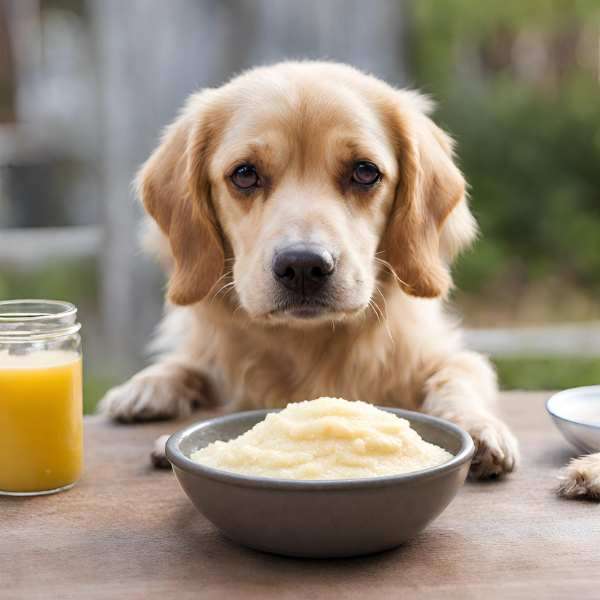Yes! Dogs can safely eat grits but there are some considerations to consider. Grits are made from ground corn, and the corn itself is good for dogs. But the main thing is that you should keep the grit plain without any additional things.
You should have to avoid using no butter, oils, salt, or anything else that might not be good for them. If you want to share grits with your dog, make sure they’re cooked well and free from any extras that could harm them.
But you should note that grits can be good as an occasional treat as it cannot act as a main source of nutrition.
If you are unsure about the safety of diets for your dog, you can talk to the vet. They can give you the best advice about your pup’s diet.
Benefits of Giving Grits to Dogs
Supported Eye Health
Grits have antioxidants like lutein and zeaxanthin that can be good for your dog’s eyes. These antioxidants help to protect their eyes from harmful free radicals. They might even keep your dog’s eyes healthy and lower the chances of eye problems.

Source of Energy and Nutrients
Grits made from corn can give your dog a good energy boost because it is rich in carbohydrates. Additionally, grits also contain important nutrients like dietary fiber and fatty acids. These nutrients are great for keeping your dog healthy all around.
Micronutrients and Vitamins
Grits have some helpful micronutrients like omega-6, selenium, magnesium, phosphorus, and zinc. Grits also come with vitamins, including B1 (thiamine), which does important stuff in your dog’s body.
Warming and Filling
They give a warm, cozy feeling and can make your dog feel satisfied after eating. This can also stop your dog from eating too much of them.
Risks of Feeding Grits to Dogs
Feeding grits to your dog can pose certain risks, and it’s essential to take precautions when considering this food for your pet:

Gastrointestinal Upset: You must be careful with how many grits you give your dog because they’re rich in carbs. Too much can upset your dog’s tummy and lead to problems like bloating, diarrhea, or vomiting.
Obesity: There are too many calories in grits which can lead to weight gain in dogs. If your dog gets too heavy, it can cause health problems.
Sodium-Ion Poisoning: You must look before buying the grits from stores as they contain too much salt. Too much salt can be bad for dogs and lead to something called sodium-ion poisoning. This can make your dog thirsty, and they might throw up, have diarrhea, or even have seizures.
How to Safely Feed Grits to Dogs

Grits can be prepared for dogs in a way that ensures their safety and enjoyment:
Choose Plain Grits: Unseasoned grits without any added butter, salt, spices, or toppings. Because these additives are not good for dog’s health.
Cook Thoroughly: Cook the grits thoroughly according to the package instructions. Make sure you cook the grits completely so they become soft for easy digestion.
Allow to Cool: After cooking, let the grits cool down to room temperature before serving them to your dog. Hot food can burn their mouth and throat.
Serve in Moderation: As said earlier, give your dog grits in the right amount. Small servings are best, and they should not replace your dog’s regular balanced diet.
Monitor for Allergies: When introducing grits to your dog’s diet for the first time, monitor them closely for any signs of allergies or adverse reactions. If your dog experiences any discomfort, discontinue feeding grits.
